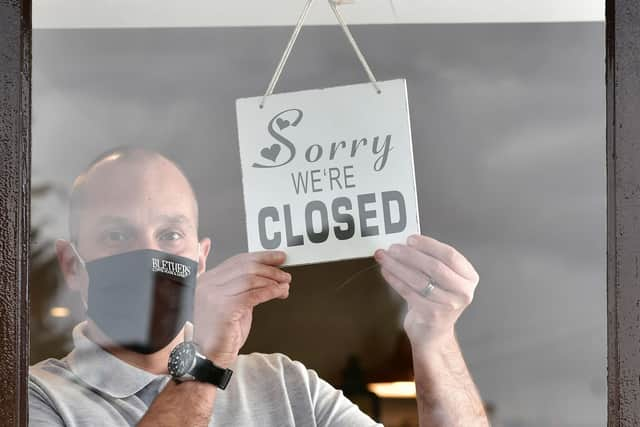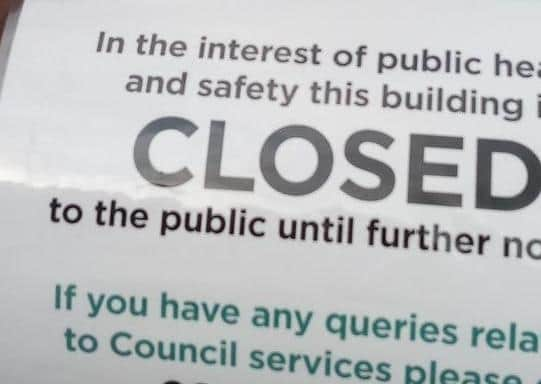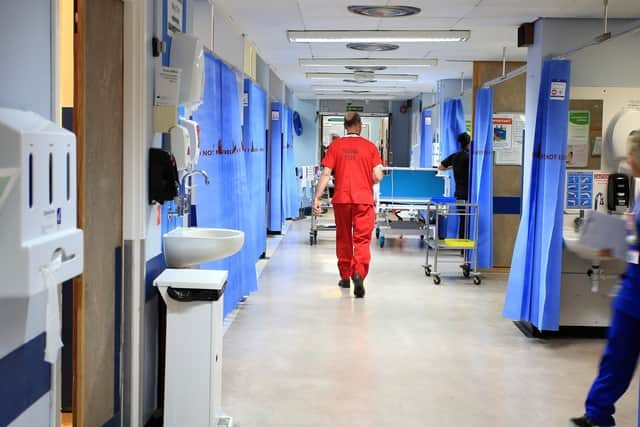Evidence behind NI’s Covid-19 response published - business chief Simon Hamilton brands’flimsy’ evidence ‘absolutely shocking’
and live on Freeview channel 276
The evidence includes the executive’s paper on “non-pharmaceutical options for reducing the risk of Covid-19”.
It assesses the effectiveness behind measures on travel, personal contacts and education.
Advertisement
Hide AdAdvertisement
Hide AdThe paper also outlines reasons for the four-week lockdown currently in place in Northern Ireland.
This has seen the closure of hospitality businesses, with pubs and restaurants limited to takeaway only.
The paper says the closure could have a moderate impact on transmission of the virus, with a potential reduction in the R rate of transmission of between 0.1 and 0.2.
It says curfews are “likely to have a marginal impact”.


Included in the documents are papers from the government’s Scientific Advisory Group for Emergencies, slides presented at Stormont press conferences and the weekly reports on the R number.
Advertisement
Hide AdAdvertisement
Hide AdR is the number of people that one infected person will pass on a virus to, on average.
The Chief Scientific Advisor Prof Ian Young said the evidence bank would help inform discussion about the pandemic response.


On Tuesday, Prof Young said there was “strong evidence” that coronavirus restrictions imposed in the Derry City and Strabane council area were making a difference.
Many businesses who have had to close their doors for four weeks asked to see evidence of how ministers reached their decisions.
Advertisement
Hide AdAdvertisement
Hide AdThe closure of a range of businesses has been questioned after it emerged Stormont ministers were advised the moves would have a low impact on infection rates.
The Executive paper said the move would have a low impact on Covid-19 transmission, with a potential reduction in the R number by 0.05.


However, the paper said the closures would have a high social and economic impact, warning it would disproportionately affect low-income workers and women.
Other steps that would have had a greater projected impact on the R number – such as the closure of churches (estimated reduction of R by 0.1) – were not taken by the Executive.
Advertisement
Hide AdAdvertisement
Hide AdThe paper said current closure of bars, pubs, cafes and restaurants was likely to have a “moderate impact”, reducing R by between 0.1 and 0.2.
Part of the evidence base included a reference to multiple “anecdotal reports” of outbreaks linked to bars in the UK and beyond.
The paper said a curfew, which ministers introduced last month, was likely to have a “marginal impact”.
In terms of the non-Covid impact, the paper again warned of a high impact caused by a loss of income for hospitality workers.
Advertisement
Hide AdAdvertisement
Hide AdSimon Hamilton, chief executive of business representative body Belfast Chamber, branded the evidence as “flimsy” and said the paper posed “massive questions” for the Executive.
“Why did Ministers close hospitality and close contact retail when they knew it would have such a low impact on the R number, a high impact incomes and a disproportionate effect on the poor and women?” he tweeted.
Mr Hamilton, a former DUP minister in the Executive, described the evidence published on Tuesday night as “absolutely shocking”.
The Executive paper said the closure of all schools would have a “moderate impact” on R, reducing it by between 0.2 and 0.5.
Advertisement
Hide AdAdvertisement
Hide AdIt said the non-Covid impact would be high due to the disruption to young people’s education.
Schools are currently closed for two weeks after the mid-term Halloween break was extended by a week.
The paper said the move that would have the greatest impact on transmission would be the reintroduction of a stay-at-home order similar to the first lockdown.
It said that move had been shown to reduce R from 2.7 to 0.6 during the first lockdown.
Advertisement
Hide AdAdvertisement
Hide AdThe Executive paper was part of a bank of evidence papers published by the Department of Health.
The bank includes reports from Sage (Scientific Advisory Group for Emergencies), weekly papers on the R number in Northern Ireland and a variety of other expert assessments.
Commenting on the publication, chief scientific adviser Professor Ian Young said: “This evidence bank brings documents on key Covid-related issues together in the one place.
“It will be updated as appropriate and will help to inform public debate and discussion on Northern Ireland’s response to the pandemic.”
Advertisement
Hide AdAdvertisement
Hide Ad__________________________________________________________________________________________________
Thank you for reading this story on our website.
While I have your attention, I also have an important request to make of you.
With the coronavirus lockdown having a major impact on many of our advertisers - and consequently the revenue we receive - we are more reliant than ever on you taking out a digital subscription.
Subscribe to newsletter.co.uk and enjoy unlimited access to the best Northern Irish and UK news and information online and on our app.
Advertisement
Hide AdAdvertisement
Hide AdWith a digital subscription, you can read more than five articles, see fewer ads, enjoy faster load times, and get access to exclusive newsletters and content. Visit www.newsletter.co.uk now to sign up.Our journalism costs money and we rely on advertising, print and digital revenues to help to support them.
By supporting us, we are able to support you in providing trusted, fact-checked content for this website.
Thank you,
Alistair Bushe